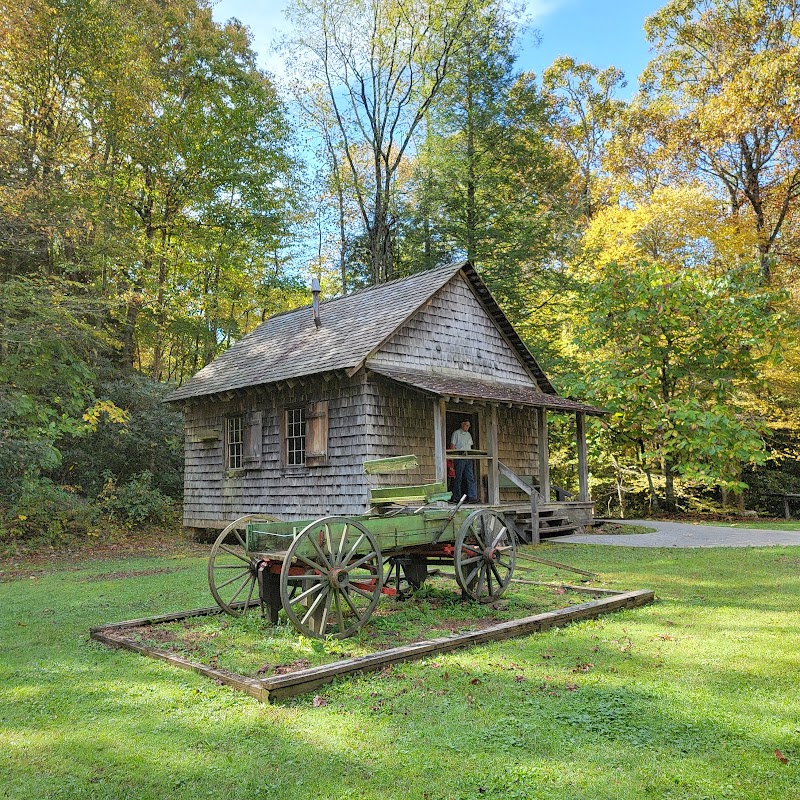The Cradle of Forestry and Gifford Pinchot’s Vision

In the misty embrace of western North Carolina’s Blue Ridge Mountains, where sunlight filters through towering hardwoods and the air carries the earthy scent of damp leaves, lies a place that changed the course of American conservation. Known as the Cradle of Forestry, this stretch of land in Pisgah National Forest isn’t just a serene retreat—it’s the birthplace of modern forest management.
At its heart is a story of visionaries: George Vanderbilt, whose Gilded Age ambition extended beyond opulence to stewardship; Gifford Pinchot, the forester who saw sustainable land use as both science and philosophy; and Dr. Carl Schenck, whose hands-on teaching methods shaped generations of forestry pioneers. Together, they built more than trails and schools—they crafted a legacy that echoes in forests nationwide.
The Spark of Conservation: The Biltmore Estate
To understand the Cradle of Forestry, you must begin at the Biltmore Estate, Vanderbilt’s sprawling 125,000-acre property. In the late 19th century, Vanderbilt wasn’t content with merely building the largest private home in America; he sought to reverse the damage wrought by decades of reckless logging.
Enter Gifford Pinchot, a freshly minted Yale graduate armed with European forestry techniques. At Biltmore, Pinchot saw an opportunity to prove that forests could be both productive and preserved—a radical notion in an era dominated by clear-cutting. He introduced selective logging, tree planting, and erosion control, pioneering a model that viewed forests as living systems, not disposable commodities.
Pinchot’s success at Biltmore wasn’t just about restoring trees—it was about restoring balance. His work turned Vanderbilt’s estate into a proving ground for sustainable forestry, and it wasn’t long before the lessons learned there rippled across the nation.
Dr. Carl Schenck: The Teacher of Forests
When Pinchot departed in 1895, the baton was passed to Dr. Carl Schenck, a German forester whose passion for education matched his expertise in land management. Schenck expanded Pinchot’s efforts, founding the Biltmore Forest School in 1898, the first forestry school in the United States.
Here, learning was immersive. Students didn’t sit in classrooms; they roamed the forests, wielding tools and solving real-world problems. From mapping timber resources to crafting sustainable harvest plans, they learned to see the forest not just as a resource but as an interconnected system requiring care and foresight.
Today, visitors to the Cradle of Forestry Historic Site can step back into that pioneering era. Restored buildings, interactive exhibits, and interpretive trails offer a window into the methods and ideals that defined early American forestry.
Gifford Pinchot: Architect of a National Movement
While Schenck stayed to nurture the next generation of foresters, Gifford Pinchot’s ambitions reached new heights. In 1898, he became the head of the Division of Forestry, advocating for federal policies that mirrored the sustainable principles he honed at Biltmore.
The U.S. Forest Service and “The Greatest Good”
By 1905, Pinchot had become the first Chief of the U.S. Forest Service. Under his leadership, the agency adopted the philosophy of managing forests for “the greatest good for the greatest number in the long run.” This vision emphasized multi-use management: forests were to serve as sources of timber, clean water, wildlife habitats, and recreation—all while being safeguarded for future generations.
Pinchot’s impact extended beyond policy. In 1914, the federal government purchased much of Vanderbilt’s managed forest to establish Pisgah National Forest, the first national forest created from private land. This act not only preserved the landscape but also set a precedent for public investment in conservation.
The Cradle of Forestry Today
Nestled within Pisgah National Forest, the Cradle of Forestry Historic Site celebrates the roots of conservation and invites visitors to explore the philosophies that shaped the modern environmental movement.
Highlights of the Site
- Historic Campus: The preserved buildings of the Biltmore Forest School, from Schenck’s office to the blacksmith shop, evoke the hands-on spirit of early forestry education.
- Forest Festival Trail: This 1.3-mile loop offers insights into historic logging techniques and the evolution of sustainable practices.
- Interactive Museum: Exhibits bring forestry’s history to life, showcasing tools, maps, and the enduring relevance of sustainable land management.
- Hands-On Learning: From tree identification workshops to antique saw demonstrations, the Cradle connects families and nature through active discovery.
A Legacy for the Future
The story of the Cradle of Forestry is not just a chapter in history—it’s a living guide for today’s challenges. As climate change reshapes ecosystems and deforestation threatens biodiversity, Pinchot’s principles of balance and foresight are more vital than ever.
Modern forestry continues to draw from the lessons of Pisgah, whether managing carbon-rich forests to combat global warming or promoting community-based stewardship to protect vulnerable lands.
Planning Your Visit
Location
The Cradle of Forestry is located in Pisgah National Forest, a scenic 40-minute drive from Asheville, North Carolina.
Best Seasons
- Spring and Summer: Lush greenery and blooming wildflowers make for vibrant exploration.
- Autumn: The forest transforms into a tapestry of color, offering unparalleled views.
Nearby Attractions
- Looking Glass Falls: A stunning cascade just minutes away.
- Sliding Rock: A natural waterslide perfect for cooling off on warm days.
The Cradle of Forestry: Rooted in Conservation
Standing among the towering trees of Pisgah National Forest, it’s impossible not to feel the weight of history and hope. This is where American forestry was born, where visionaries turned ambition into action and left behind a legacy that continues to grow.
The Cradle of Forestry is more than a destination—it’s an invitation. To walk its trails is to step into the footprints of those who believed that the future of forests—and the planet—depends on thoughtful stewardship. It’s a call to carry their vision forward, ensuring that the beauty of places like Pisgah endures for generations yet to come.
[Closing spread: A view of Pisgah National Forest bathed in the golden hues of an autumn sunset, the mountains rolling into the horizon like waves frozen in time.]








